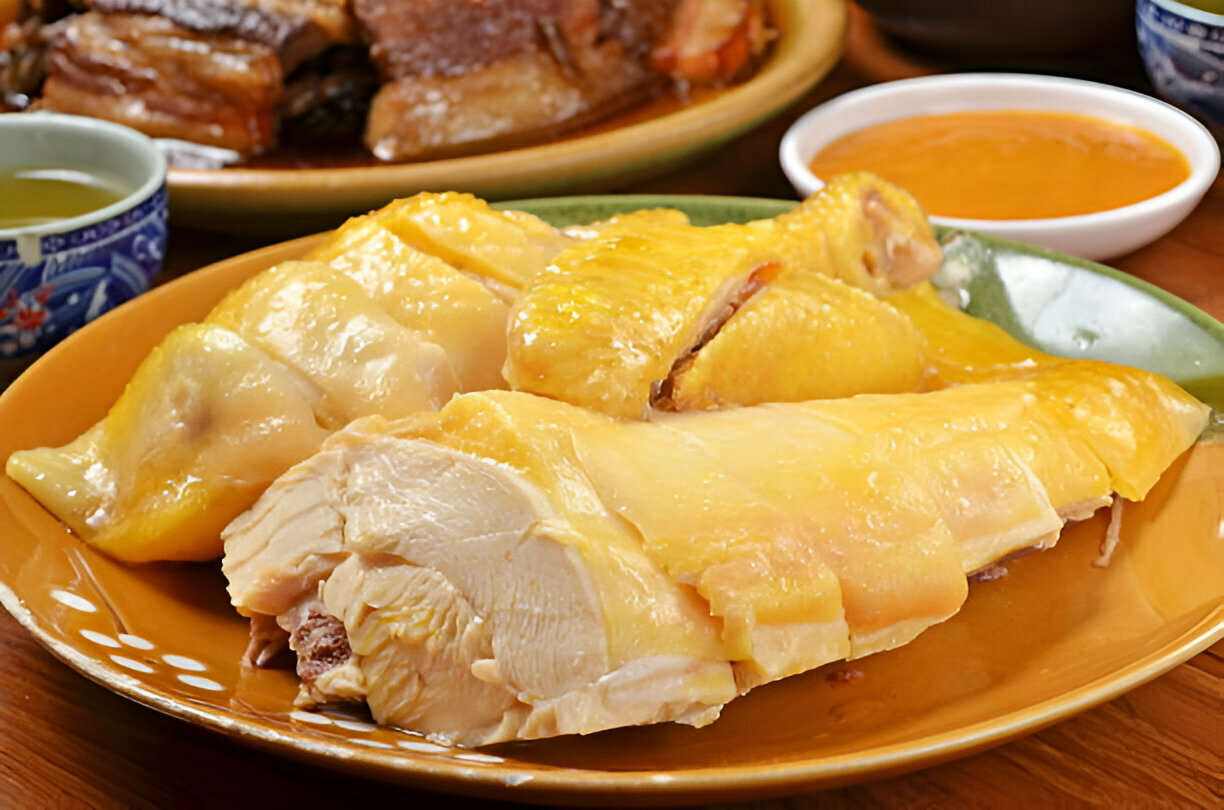
Cantonese Poached Chicken Recipe
Silky, juicy, and gently infused with ginger and scallion, this Cantonese poached chicken is simplicity at its most flavorful. It’s a comforting classic that turns minimal ingredients into a deeply satisfying meal.
Print
Pin
Servings: 6
Calories: 300kcal
Ingredients
For the chicken:
- 3 –4 pound whole chicken preferably organic, free-range; optional: head and feet attached; must be at room temperature
- 2 scallions
- 5 slices of fresh ginger
For the sauce:
- 3 tablespoons finely minced scallions white and light green parts
- 2 tablespoons finely minced ginger
- 3 tablespoons oil
- Salt to taste
- Soy sauce optional
Instructions
- Ensure the chicken is at room temperature before beginning, as starting with a cold bird will result in uneven cooking. Rinse the chicken thoroughly under cold water, including the cavity. Remove any leftover internal organs and check for stray feathers. Be cautious during this step to avoid water splashing and potential surface contamination. Keep the skin intact—this acts as a barrier, helping retain moisture and produce that signature silky texture.
- Fill a large stockpot with just enough water to submerge the chicken entirely. An easy method is to place the chicken in the pot, fill with water until the bird is covered, then remove the chicken, leaving the water. Avoid adding extra water, as a smaller volume results in a more concentrated and flavorful poaching broth. For a 4-pound chicken, you’ll typically need about 18 cups of water.
- Add the scallions and ginger slices to the pot. Bring the water to a rolling boil, then carefully lower the chicken into the pot breast-side up, legs down. It’s fine if part of the breast peeks above the water. The temperature will drop slightly when the chicken is added—allow the water to come back to a boil.
- As soon as it reaches a boil again, immediately lift the chicken out of the pot using two sturdy utensils, such as wooden spoons hooked under the wings. Drain any cooler water that may have pooled in the cavity. Lower the chicken back into the pot and bring the water to a gentle boil once more.
- Once the water is just boiling again, reduce the heat to its lowest setting. The water should barely bubble—a slow simmer with subtle movement is ideal. Cover the pot and allow the chicken to poach for 35–40 minutes, or approximately 10–11 minutes per pound. Avoid uncovering the pot frequently, which can disrupt the cooking process and drop the temperature.
- To check for doneness, pierce the thickest part of the thigh with a skewer or chopstick. If the juices run clear, the chicken is cooked through. Carefully lift the bird out of the pot and plunge it into a large bowl of ice water to cool rapidly. This halts the cooking and tightens the skin, giving it a pleasant firmness and sheen.
- While the chicken cools, prepare the sauce. For a traditional version, combine scallions, ginger, and oil in a bowl. Add salt to taste. If preferred, split the sauce into two bowls and add soy sauce to one for a deeper, savory variation. Both are excellent alongside the chicken and offer distinct flavor profiles.
- Once cooled, remove the chicken from the ice water and pat it dry. For added visual appeal and a luxurious finish, brush the skin lightly with oil or skimmed chicken fat from the poaching liquid.
- To serve, cut the chicken into bite-sized pieces using the Chinese-style method, ideal for eating with chopsticks. Plate alongside your preferred dipping sauce and a bowl of steamed rice for a complete, comforting meal.
Nutrition
Calories: 300kcal